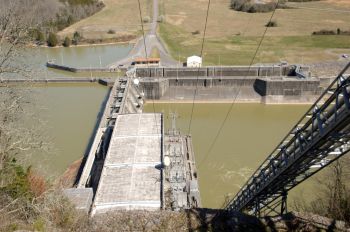Navigation: Difference between revisions
From ASDSO Dam Safety Toolbox
No edit summary Tag: Reverted |
No edit summary Tag: Manual revert |
||
| Line 18: | Line 18: | ||
Dams and locks are used to facilitate the transport of goods and materials. The [[U.S. Army Corps of Engineers]] maintains navigation projects in 41 states to support the transport of freight on inland waterways, including 275 locks and 926 harbors. | Dams and locks are used to facilitate the transport of goods and materials. The [[U.S. Army Corps of Engineers]] maintains navigation projects in 41 states to support the transport of freight on inland waterways, including 275 locks and 926 harbors. | ||
“A navigation dam is similar to most other dams in that its intended purpose is to impound water. However, it is usually designed so that the water surface upstream of the dam is of such elevation that there will be sufficient depth for navigating a relatively long distance upstream from the dam without having to go through another lock or to dredge excessively”. | “A navigation dam is similar to most other dams in that its intended purpose is to impound water. However, it is usually designed so that the water surface upstream of the dam is of such elevation that there will be sufficient depth for navigating a relatively long distance upstream from the dam without having to go through another lock or to dredge excessively”.<ref name="EM1110">[[Planning and Design of Navigation Dams (EM 1110-2-2607) | EM 1110-2-2607 Planning and Design of Navigation Dams, USACE, 1995]]</ref> | ||
==Best Practices Resources== | ==Best Practices Resources== | ||
Revision as of 22:40, 23 November 2022

|
| Cordell Hull Dam and Lock, Carthage, Tennessee (USACE) |
Dams and locks are used to facilitate the transport of goods and materials. The U.S. Army Corps of Engineers maintains navigation projects in 41 states to support the transport of freight on inland waterways, including 275 locks and 926 harbors.
“A navigation dam is similar to most other dams in that its intended purpose is to impound water. However, it is usually designed so that the water surface upstream of the dam is of such elevation that there will be sufficient depth for navigating a relatively long distance upstream from the dam without having to go through another lock or to dredge excessively”.[1]
Best Practices Resources
![]() Planning and Design of Navigation Dams (EM 1110-2-2607)
Planning and Design of Navigation Dams (EM 1110-2-2607)
Citations:
Revision ID: 4579
Revision Date: 11/23/2022
